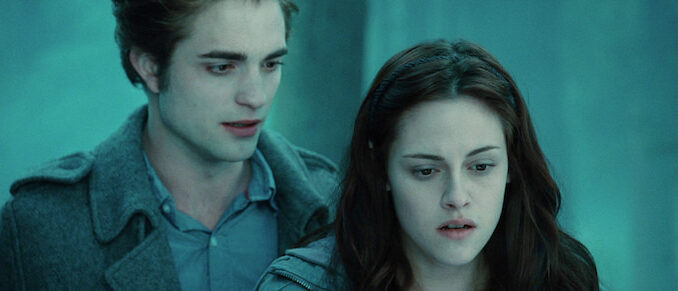
The Echo Chamber of Memory: When Edward and Jacob Smiled Together
In the sprawling, often chaotic tapestry of the internet, certain moments ripple outwards with an almost seismic force, momentarily eclipsing the daily churn of news and fleeting trends. These are the "internet-breaking" events, not always born of scandal or seismic global shifts, but sometimes, surprisingly, from the simple convergence of two familiar faces. Such was the case with the photo of Robert Pattinson and Taylor Lautner, united years after the cinematic phenomenon that defined a generation, a snapshot that didn't just break the internet – it cracked open a collective time capsule and flooded the digital realm with a potent, intoxicating wave of nostalgia.
To understand the magnitude of that single image, one must first rewind to the late 2000s and early 2010s, a period utterly dominated by the Twilight Saga. More than just a film series, Twilight was a cultural colossus, a fabled land of vampires, werewolves, and a human girl caught between two impossibly handsome, impossibly devoted supernatural beings. The saga wasn't merely consumed; it was lived. Fandom reached a fever pitch, manifesting in passionate online debates, real-life merchandise empires, and, most famously, the fiercely divided battle lines of "Team Edward" versus "Team Jacob." Robert Pattinson, the brooding, sparkling vampire Edward Cullen, and Taylor Lautner, the loyal, shirtless werewolf Jacob Black, became more than just actors; they were emblems of competing desires, allegiances, and even, for many young fans, their first real brushes with fictional heartbreak and devotion. The "rivalry" between their characters, amplified by relentless media portrayal, often blurred into a perceived real-world tension, even if purely manufactured.
Years passed. The Twilight craze, while enduring for its dedicated fanbase, receded from the mainstream's daily consciousness. Robert Pattinson shed his sparkly skin to forge a formidable career in acclaimed independent cinema before donning the cowl as Batman, a testament to his artistic ambition. Taylor Lautner, too, moved beyond the role that made him famous, exploring other projects and evolving as an individual. The cultural conversation moved on, and the intense "Team Edward" vs. "Team Jacob" debates became the stuff of nostalgic retrospectives, charming relics of a bygone era.
And then, it happened. A photograph, almost innocuous in its simplicity: Robert Pattinson and Taylor Lautner, side-by-side, smiling. There was no theatrical lighting, no dramatic pose, no calculated publicity stunt. It was just… them. Two grown men, seemingly at a casual event, displaying a genuine camaraderie that belied the fabricated rivalry of their past roles. The immediate reaction was an explosion. The internet, that sprawling, interconnected web of shared consciousness, broke. Twitter feeds became a torrent of memes, bewildered exclamations, and emotional outpourings. Instagram was flooded with reshares. News outlets scrambled to cover the "reunion." For a moment, the vast, fragmented digital world coalesced around this single image, united in a collective gasp of recognition and a sudden, overwhelming surge of sentiment.
The photo's power lay not in its composition, but in its profound symbolic weight. For millions, it was a portal to a younger self. It wasn't just seeing two actors; it was glimpsing a fragment of their own adolescence, a reminder of sleepovers spent debating fantastical love triangles, of first crushes projected onto silver screens, of the sheer, unadulterated passion of a fandom that felt like family. The sight of Edward and Jacob, not as rivals, but as amiable peers, seemed to heal an unspoken, lingering divide. It signaled a maturity – not just for the actors, who clearly harbored no animosity, but for the fans themselves, who could now appreciate the shared experience without the need for division. The "internet breaking" wasn't about shock value; it was a sentimental supernova, a collective sigh of contentment for a chapter beautifully closed.
In an age often characterized by cynicism and constant, demanding novelty, the Pattinson-Lautner photo was a potent reminder of the enduring power of pop culture and the deep emotional wells it can tap. It illustrated how a simple image, when imbued with years of shared memory and cultural significance, can transcend its pixels and become something more: a catalyst for connection, a celebration of growth, and a comforting echo of a time when the biggest decision in the world might just have been choosing between a vampire and a werewolf. The internet didn't just break; it paused, reflected, and, for a fleeting, beautiful moment, reunited with its own past.
